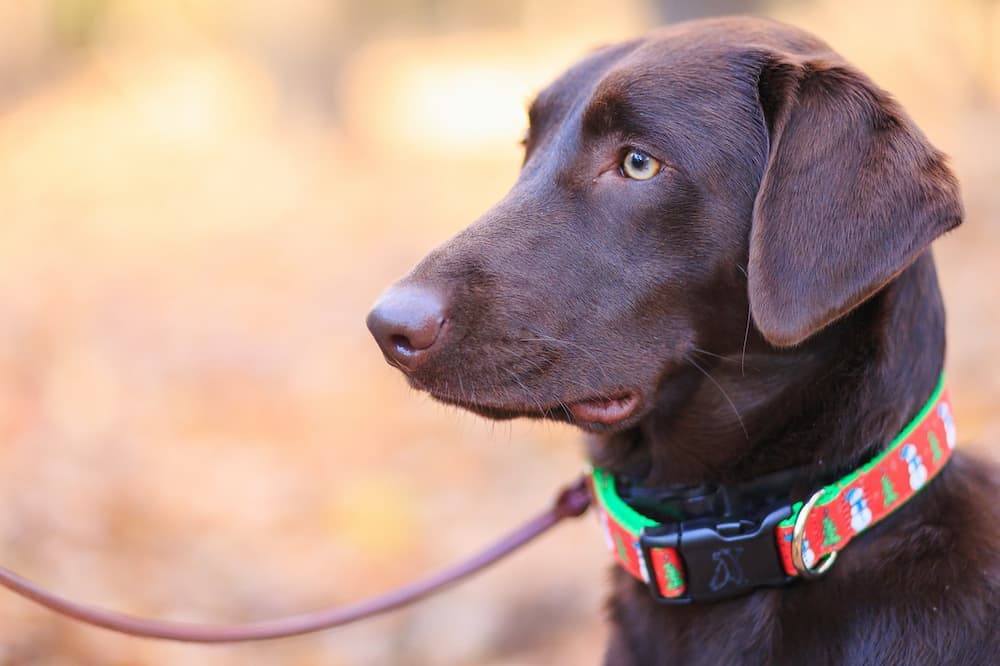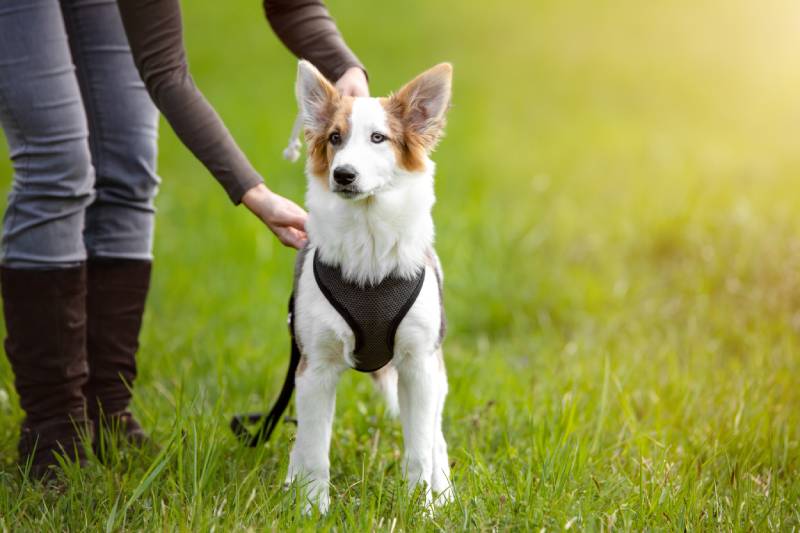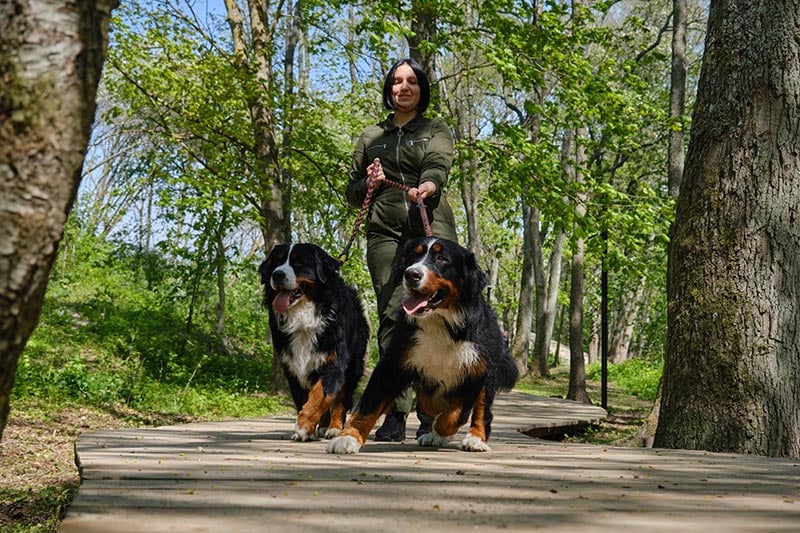Taking your dog for a walk can be fun for you and your pet, and it helps them get the exercise that they need to stay healthy and happy. However, ensuring your dog’s safety during walks is essential, especially if you are walking through unfamiliar areas or busy environments. So, keep reading as we list several tips and tricks to help protect you and your pet while on an adventure.
Top 12 Tips on How to Protect Your Dogs While Out Walking
1. Choose a Suitable Leash, Collar or Harness

Select a strong, sturdy leash that is less than 6 feet long. Avoid using a retractable leash because it gives your dog too much freedom and can be dangerous in busy areas or when your dog encounters another aggressive animal. You should also choose a collar or harness that fits properly and won’t slip off but isn’t so tight that it restricts breathing.
2. Provide Them With Proper Training
Train your dog to walk on a leash and obey basic commands such as “sit” and “stay,” so you can keep your dog under control and prevent them from running into danger.
3. Scout Out the Route
Before taking your dog for a walk, scouting the route to identify potential hazards, such as busy roads or areas where other dogs may be off leash, is a good idea. Start with quiet trails to let your dog get used to walking with you before moving to high-traffic areas.
4. Keep a Watchful Eye on Your Dog

Always watch your dog closely while walking, and be aware of their behavior so you can spot any signs of discomfort or distress quickly and prevent them from eating something harmful or running off.
5. Prepare for Emergencies
Always carry a first-aid kit, a 24-hour emergency vet clinic phone number, and a list of emergency contacts with you in case of any accidents or injuries. Also, ensure that your dog’s identification tags and microchip are up to date with your contact information.
6. Consider Microchipping Your Pet
Microchipping your dog is essential to help identify them if they run off and get lost, increasing the chances that they will be found and returned to you. Microchipping pets is a legal requirement in many countries around the world. To make things very easy for everyone, microchipping is a quick, simple, and low-cost procedure and it is available in all veterinary practices.
7. Consider Using Protective Gear

If you are walking your dog in an area with wildlife or where other dogs may be off leash, consider using protective gear, such as a harness or reflective vest. If you have a small dog, you can consider getting a Coyote Vest to help keep your pet safe from predators.
8. Respect Other People, Animals, and Wildlife
Always respect other people and animals while walking with your dog. Keep your dog under control and on a leash to avoid any conflicts or incidents. Additionally, clean up after your dog, and properly dispose of any waste to keep the environment clean and safe.
9. Stay Aware of Weather Conditions
Be aware of the weather conditions before taking your dog out for a walk. During hot weather, avoid walking on hot surfaces like asphalt and artificial grass that can burn your dog’s paws, and bring water to keep your dog hydrated. In cold weather, ensure that your dog has the appropriate clothing to help keep them warm. Also, mind the time of day, as it’s easy to start walking in the morning when it’s cool, only to find yourself far from home when the temperature rises.
10. Watch Out for Signs of Fatigue

Monitor your dog’s energy level during the walk, and watch for signs of fatigue, such as excessive panting, lagging, or lying down. If your dog seems tired, take a break, offer water, and rest before continuing the walk.
11. Be Cautious of Unfamiliar Dogs
If you encounter an unfamiliar dog while walking, keep your dog close to you, and avoid approaching the other dog. If the other dog comes to you, try to remain calm and avoid sudden movements.
12. Stay Visible at Night
If you walk your dog at night, ensure that you and your dog are visible to drivers and pedestrians. Wear reflective clothing, and consider getting a reflective collar or leash for your dog.
Final Thoughts
Protecting your dog while walking is essential for ensuring their safety and well-being. By following the tips outlined here, you can minimize potential hazards, keep your dog under control, and be ready for emergencies. Whether it’s being cautious of unfamiliar dogs, staying visible at night, or training your dog, you can help ensure that every walk with your dog is a safe and enjoyable experience.
Featured Image Credit: tugol, Shutterstock
Contents
- Top 12 Tips on How to Protect Your Dogs While Out Walking
- 1. Choose a Suitable Leash, Collar or Harness
- 2. Provide Them With Proper Training
- 3. Scout Out the Route
- 4. Keep a Watchful Eye on Your Dog
- 5. Prepare for Emergencies
- 6. Consider Microchipping Your Pet
- 7. Consider Using Protective Gear
- 8. Respect Other People, Animals, and Wildlife
- 9. Stay Aware of Weather Conditions
- 10. Watch Out for Signs of Fatigue
- 11. Be Cautious of Unfamiliar Dogs
- 12. Stay Visible at Night
- Final Thoughts











